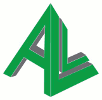Advanced ICT
ALL is committed to advanced ICT technology as a scientific and technological researcher and as software developer.
I. As a developer and ICT solution provider ALL actively applies the following approaches and technologies:
-
Service-oriented approach. According to this approach ALL’s activity includes service-oriented architecture (SOA) technology which is a software design and software architecture design pattern based on distinct pieces of software providing application functionality as services to other applications.
Services can be combined by other software applications to provide the complete functionality of a large software application. SOA makes it easy for computers connected over a network to cooperate.Every computer can run an arbitrary number of services, and each service is built in a way that ensures that the service can exchange information with any other service in the network without human interaction and without the need to make changes to the underlying program itself. Service management has a set of principles to be used for analysis, inference, and action in various situations involving services. These principles complement the functions and computation processes. When functions and processes are to be changed, these principles provide the necessary guidance and reference. When solving problems related to services, these principles are to be used to resolve ambiguity and conflict.
The system design, which is based on the principles of service architecture and starts from business logic, ensures that the resulting IT system's resources are clearly partioned and consistently represented. With the help of the related WS-* standards it is possible to develop systems consisting of reusable, loosely coupled units which are independent but can be connected to each other.
ALL provides a comprehensive, consistent and coherent set of service management processes, promoting a quality approach to achieving business model and efficiency in the use of information systems. The provided successful service management helps to converte innovative ideas and concepts into services for customers. These services will be reliable, consistent and fitting for purpose.
-
Data-centric systems approach which focus on information extraction from the huge amounts of unstructured data. This approach is related to processing differently structured data originating from several different sources. Although this focus has been highlighted by the problem of Big Data, it can also arise in the case of normal-sized data sources, for instance, when a patient's data is scattered over differently structured electronic patient records and unstructured or semi-structured natural language documents. ALL widely uses its own innovative semantics-based information retrieval technology, which makes it possible to query different sources simultaneously. The user can enter complex queries combining atomic conditions for data characterising different time intervals. On the basis of the entered query our technology generates and executes appropriate sub-queries for each data source, and combines their results into a final answer.
II. As an R&D company ALL is active in the following areas:
-
High performance computing where a new method of parallelisation has been developed for the effective implementation of complex dynamic models. This method is based on time decomposition. By the use of this method new algorithmic approaches are investigated. Special software engineering will permit to design extreme parallelism.
-
Data-centric systems which corresponds to a fundamental paradigm shift from homogeneous compute-centric system which was designed for handling structured data to new heterogeneous data-centric system which can effectively store/process a large set of semi-structured or unstructured data for better innovation, competition and productivity. Data-centric systems can extract information from the huge amounts of unstructured data – which is important because because every two days we generate more data than all data generated from the dawn of civilisation until 2003.
-
Cognitive systems for finding new approaches to augment intelligence and problem solving capabilities. Cognitive systems are mostly based on data-driven computing which is radically different from the instruction-driven computing. These systems, which are data-driven, sense-making, information-extracting and problem-solving computers seem to have more in common with the structure of the human brain than with the architecture of a classic Von Neumann machine.


